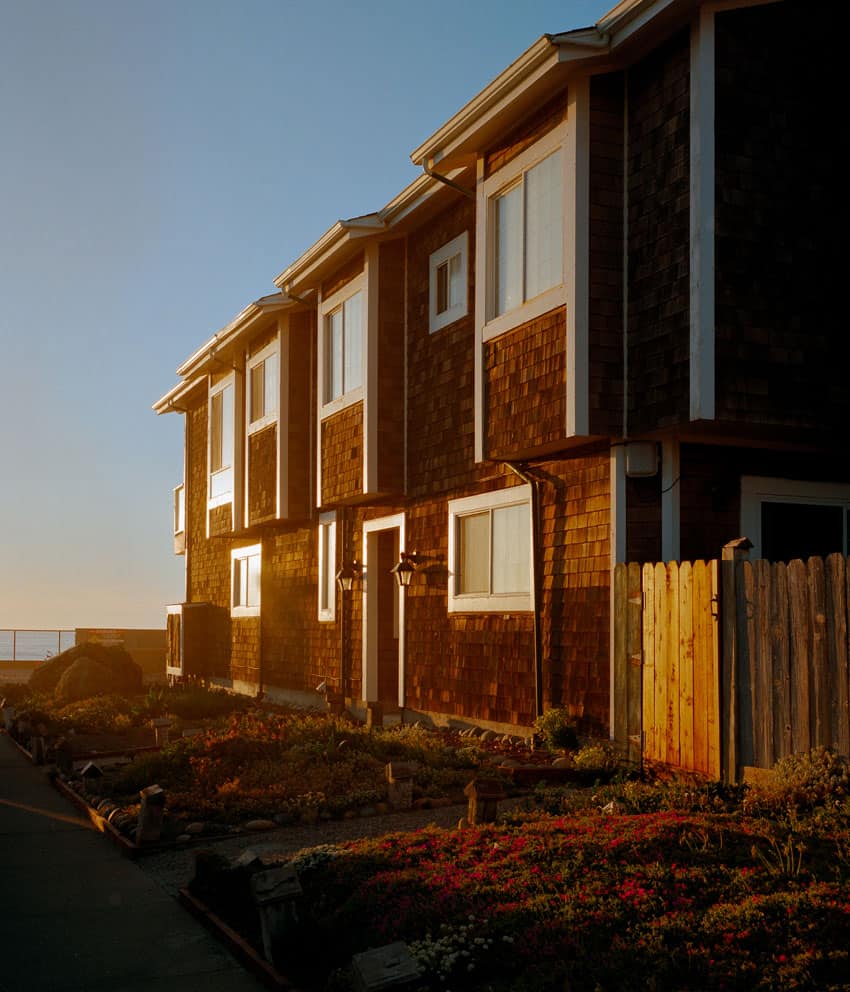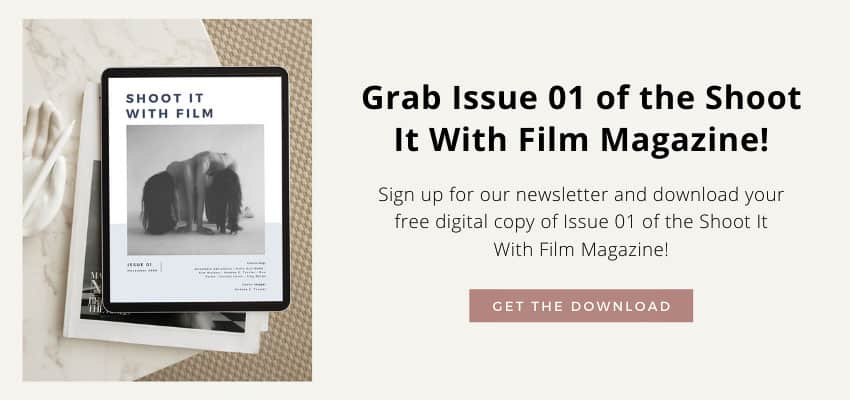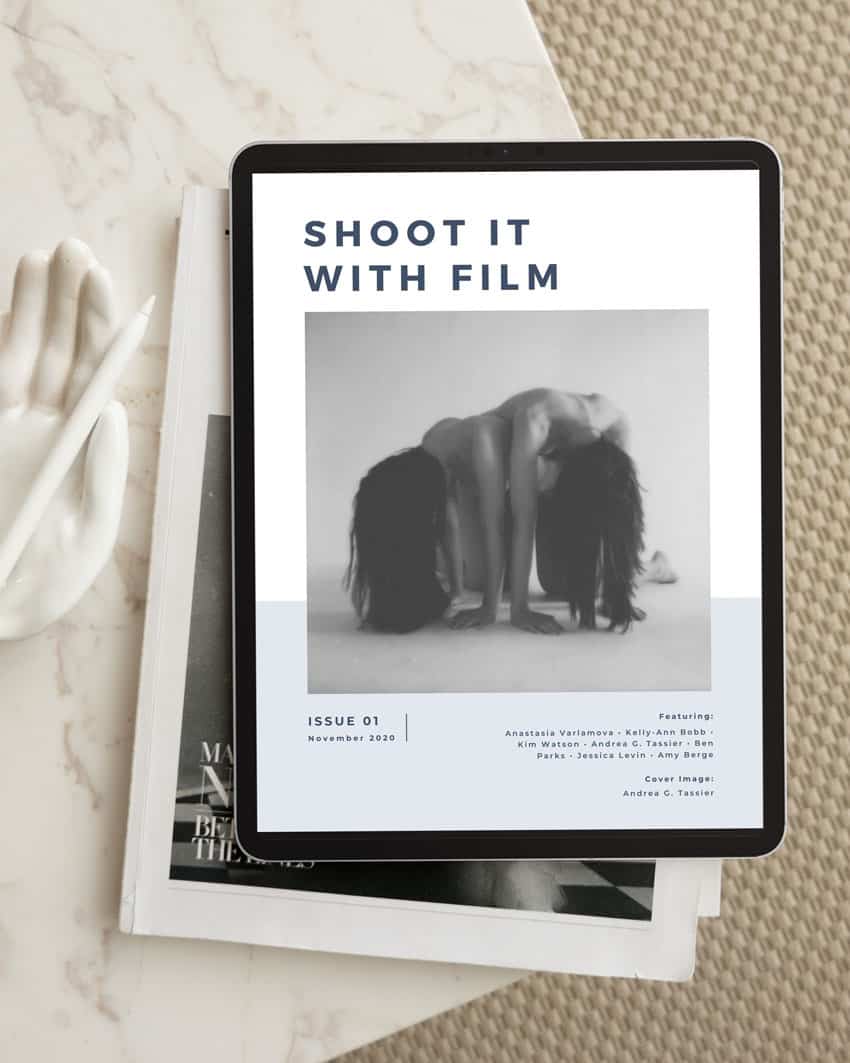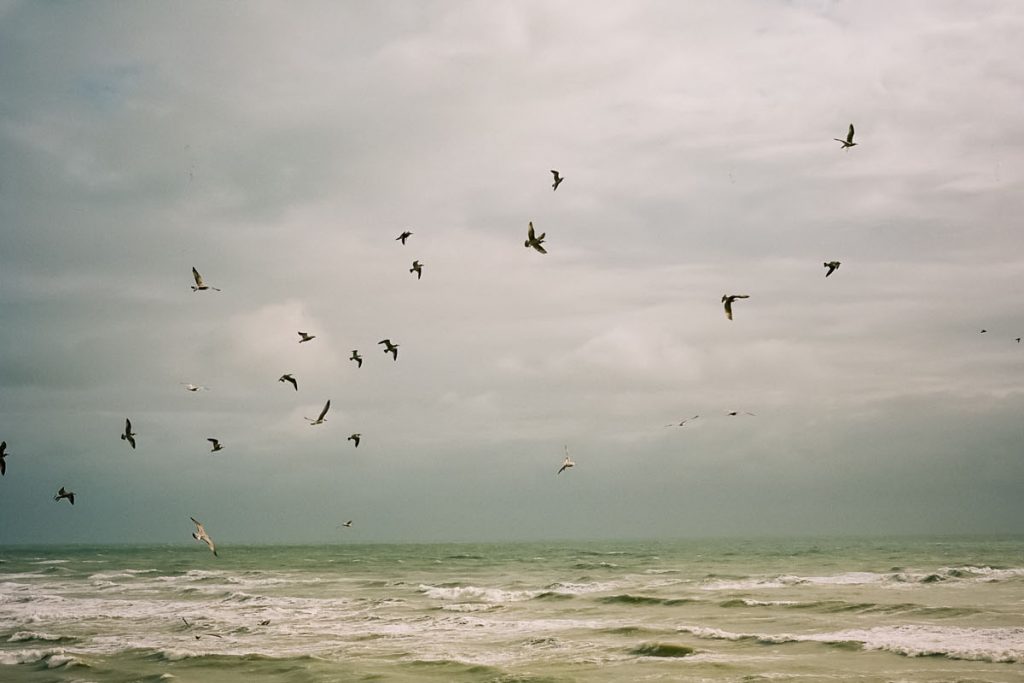
Written by Drew Evans
I’m weirdly particular about my cameras, and I think that’s what attracted me so much to the Mamiya 7.
I should probably provide some background though.
Find the Mamiya 7 at KEH Camera or on eBay.

My Photography Journey
I started my photography journey when I was 16. I was gifted a Nikon D40 that year, Nikon’s newest entry-level DSLR.
It was nothing special, but it was enough to get a camera into my hands and push me to start thinking about photography in a different way.
Years later, I purchased a Nikon D610 – my first photography purchase on my own. It felt amazing. I did a ton of research on cameras and opted for something that was not too professional, but way above amateur.
More than anything, I wanted people to see me as more than I was.


Finding My Way to the Mamiya 7
When I first picked up a Mamiya 7, it was a very strange mix of emotions.
For the longest time, I had been fighting the hype surrounding this camera. I didn’t want to succumb to G.A.S. (for those who don’t know, that’s the fateful disease many photographers suffer from called Gear Acquisition Syndrome).
The price point was absurd, and it seemed like there were pretty marginal benefits from other more appropriately-priced medium format film cameras.
Up until that point, I had primarily been a 35mm shooter only, but I had ideas in my head that I thought couldn’t quite be captured on 35mm.
Whether that’s true or not is a different discussion, but it felt like the opportunity for me to take the plunge.
Mamiya 7 Review: Does This Medium Format Rangefinder Live Up to the Hype? by Drew Evans
I actually started in the medium format world with a Hasselblad. Conceptually, I love 6×6, but I just couldn’t figure out how to make it work for me.
I then moved to a Pentax 6×7, which, despite its size, is an incredible camera. It produces amazing images and the sound of its shutter is unparalleled.
But since making the switch to film, I’ve really only ever gotten on with rangefinders, and my experience with the Pentax was no different. Not exactly sure why, but SLRs just aren’t quite right for me.
Once I sold the Pentax (and a few other appendages), I decided to jump in and pick up a Mamiya 7. I immediately took it out for a few test rolls to see how it felt, and I was pretty frustrated with the result.
I really tried not to fall in love with this camera. Really, I did.


A Few Negatives About the Mamiya 7
I’ll start with what I don’t like about it first. As someone that wears glasses everyday, I find the viewfinder to be somewhat finicky.
The viewfinder itself is clear and bright, but in my experience, it does require pretty specific eye placement to get things lined up properly.
It’s so specific that I actually thought the rangefinder wasn’t aligned and took it in for a check up (and yes, the camera store called me telling me there was absolutely nothing wrong).
I’m also not in love with the plastic used in the build. It’s really not the end of the world, and plenty of cameras reliably use plastic parts. But the Mamiya 7 has more than average and the body can feel a bit fragile at times.
That just about sums up the list of dislikes for me.


Using the Mamiya 7
The camera isn’t perfect. I don’t think any camera is. But I think the Mamiya 7 has opened up a new creative door for me.
Focusing and metering are just like any other rangefinder with a built-in light meter. The framelines move to adjust for parallax, and it’s extremely bright (later versions only improved).
To learn more about rangefinders and parallax error, check out this article here.
I have the 80mm f4 lens (find on eBay), which is incredibly sharp, and the system comes with five other lens options: 43mm (find on eBay), 50mm (find on eBay), 65mm (find at KEH Camera), 150mm (find on eBay), and 210mm (find at KEH Camera).
The camera does have two aperture priority modes: A and AEL. A is a pretty basic auto mode that adjusts the exposure readouts as you recompose your shots. AEL is what I use the vast majority of the time, as you can lock in your exposure settings and recompose.


In auto modes, the meter readout at the bottom lights up the shutter speed that the camera has selected (up to 1/500) and will flash if you’re still too overexposed.
When manually adjusting your settings, the readout lights up your currently selected speed and flashes the speed you should be at given the meter’s reading. From there, you can either adjust the aperture on the lens accordingly or turn the shutter dial.
Speaking of, the single dial on the top of the camera is tactile and easily maneuverable. It’s a tri-function dial, as it controls your shutter speed, ISO, and exposure compensation in one.
Pull the ring up to adjust ISO, press the middle button down to turn and adjust shutter speed, and press down the nearby button to set exposure compensation.
Other than an On/Off switch and a self-timer, that’s really all the camera has to offer. It’s really lightweight (maybe that’s just coming from a Pentax 6×7) and portable, and certainly makes medium format way more desirable for me to shoot.


Related: Leica M6 35mm Film Camera Review
Shooting Panoramas with the Mamiya 7
I think what really pushed me to the Mamiya 7, though, is its panoramic adapter.
Much like other 6×7 cameras, you can set the camera to shoot 120 or 220. However, the Mamiya 7 is different – its 220 setting also functions as a 135 setting for panoramas.
Back when Mamiya was producing this camera, it also built a first-party adapter that allows you to shoot panoramic 35mm film.
It’s incredibly easy to use, as it comes with two replacement spools built to wind 35mm film. It also comes with a leader mask and a rewind knob to make everything just a bit easier.
Like I mentioned earlier, I’m a 35mm guy. This really gave me the best of both worlds with an entirely new creative layer that I have never explored before. The viewfinder already has built-in markers for this kit, so it gives you clues for framing.
While panoramas aren’t always the ideal and may be gimmicky for some, the cinematic look they can create is pretty remarkable. Something you can’t really replicate (easily) with a standard 35mm camera nor other medium format cameras.


Final Thoughts
Despite how hard I’ve tried (and maybe I’m a bit ashamed to admit it), I have fallen in love with this camera.
Simply put, the Mamiya 7 is overpriced. There’s really no way around that. If it were $1,000 cheaper, it would probably still be overpriced.
But if you look past the plastic build, the ridiculous cost, and the sheer hype that the camera comes with, it’s really hard to beat. They really are phenomenal cameras.
“What camera do you use?”
That question rolls into my inbox all the time.
If you ignore everything else I’ve written here, this is probably the most important takeaway: you don’t need a Mamiya 7 to get that shot.
You don’t need any specific camera, for that matter. The 7 won’t get you substantially better shots than a Pentax or Fuji or another Mamiya. This happens to fit me, but I know many photographers that didn’t like it. And it didn’t fit their personal styles.
And that’s how it should be.

Thank you so much, Drew! Drew is a regular contributor here at Shoot It With Film, and you can check out his other articles here, such as the Leica M6 35mm Film Camera Review and 6 Tips for Buying and Shooting the Leica M6.
You can also check out more of Drew’s work on his Instagram.
Let us know any questions you have about the Mamiya 7 below in the comments, and you can pick up one for yourself at KEH Camera or on eBay.








Blog Comments
Frank
April 15, 2022 at 1:14 pm
Drew!
Yeah I succumbed to GAS too! but it had nuttin to do with equipment.
However, I would be very happy with another camera, some lenses and a flash. My current budget says otherwise. Maybe tomorrow.
Thanks for the extensive review,
FW
Drew E.
April 18, 2022 at 12:30 pm
If only budget was of no concern – it would be nice.
Joe Gardner
April 16, 2022 at 12:54 am
As someone who has always been in a constant state of ‘should I? shouldn’t I?’ About the Mamiya 7 I really appreciated this honest and informative article.
Wonderful pictures too!
Thanks Drew!
Drew E.
April 18, 2022 at 12:29 pm
Thanks for the kind words!
Charles Kronauer
April 21, 2022 at 9:23 am
I have used the Mamiya 7 for a couple years. I absolutely love it. The light meter is pretty darn good and the ergonomics are wonderful. Easy to hold. It’s a large Leica M and perfectly quiet with the leaf shutter in the lens. I have a Hasselblad 500, but for street shots or any time I am walking around a city, the M7 is my go to instrument. I have the pano 35mm adaptor; fun, but you have to guess a bit when composing.